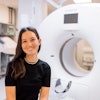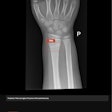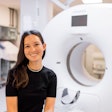A commentary calling for an “urgent and logical” merger between radiology and pathology published in the European Journal of Radiology AI on 8 October has generated much debate on social media among specialists, with the tone of posts ranging from caution to sheer enthusiasm and full support.
Written jointly by Prof. Evis Sala (prior to her appointment in September as Minister of Health and Social Welfare for Albania) and Prof. Mathias Goyen from the University of Hamburg, Germany, and GE Healthcare, the article argued that the survival of both disciplines depended on a merger in the current era of AI (see report from 9 October). While the topic has been raised at times in the past, this new commentary has unleashed a wave of strong opinions. But did the authors expect such a huge response?
“The convergence of radiology and pathology is a bold idea that challenges tradition, but the intensity of the response, especially from the younger professionals, has been quite remarkable. It shows there is appetite for change and the appetite is real,” said Sala, former chair of diagnostic imaging and radiotherapy at Fondazione Policlinico Universitario Agostino Gemelli IRCCS in Rome, in an interview with AuntMinnieEurope.
Prof. Evis Sala discusses how constructive dialogue between the specialties and regulatory bodies, as well as alignment on standards and training, will speed up an integrated diagnostic ecosystem. Videos produced by Christof.G.Pelz | GRAFIFANT Creation | www.grafifant.at | 2025.
Along with Goyen, she remains convinced that a merger is both necessary and desirable because both disciplines aim to diagnose disease, yet they operate in parallel rather than in concert. “With AI and digital technologies breaking down the barriers, we now have the tools to integrate imaging and tissue analysis into one unified diagnostic workflow. This merger could lead to faster, more accurate diagnoses and ultimately better patient outcomes.”
Long-term vision
For this integration to go ahead, the next step is dialogue, structured reciprocal conversations between radiologists, pathologists, lab physicians, hospital administrators, and industry leaders, according to Sala.
“All the stakeholders need to be involved, including the academic societies and regulatory bodies. They need to be involved early in the process to ensure the standards and training evolve in step with this vision,” she said.
Meaningful progress could be made within the next five to ten years, according to Sala, pointing to some institutions that are already piloting integrated diagnostics in certain pathologies, even if not across the board.
“The pace will depend on how quickly we can align the incentives, update the curricula, and demonstrate real clinical values. If we don’t demonstrate real clinical value even on pilot pathologies, then progress will be slow,” she stated.
Potential for turf wars
But what about the fears of one discipline subsuming the other? Sala pointed to how anxiety was normal but unfounded, with radiologists’ fears of AI being a case in point.
Is there any possibility that turf concerns will jeopardize a merger of the two specialties?
“Turf concerns are natural when change is on the horizon," she said. "But this isn’t about one specialty dominating another; it’s about collaboration and unifying expertise. No discipline will take over the other.”
“The goal is to create a new diagnostic ecosystem where both radiologists and pathologists bring their unique strengths to the table. The synergy here could be transformational for medicine -- and for the patient,” Sala concluded.
You can read the full EJR AI article here.



















